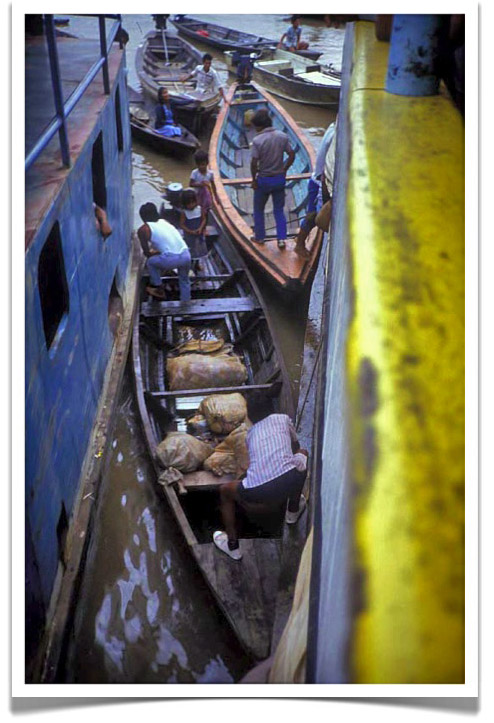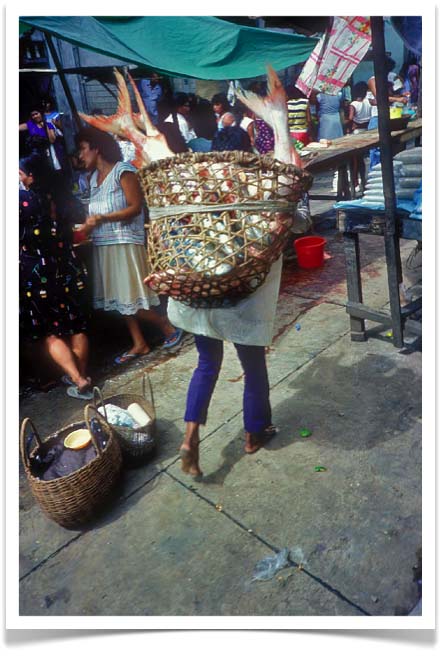Huito
 Wednesday, September 18, 2013 at 10:12AM
Wednesday, September 18, 2013 at 10:12AM 
Huito (Genipa americana L.) fruits offered casually for sale in the Iquitos market (see Belén Market, Iquitos). The fruits are pretty tasty, but a more interesting use of this plant is as a body paint. When the juice from the fruit oxidizes, it stains the skin brown. This is what indigenous Amazonian groups use to paint their faces before hunting, going into battle, or visiting a girlfriend. The dye from huito is essentially permanent, which explains so many tourists getting on the plane in Iquitos to go home with black lines on their faces.







